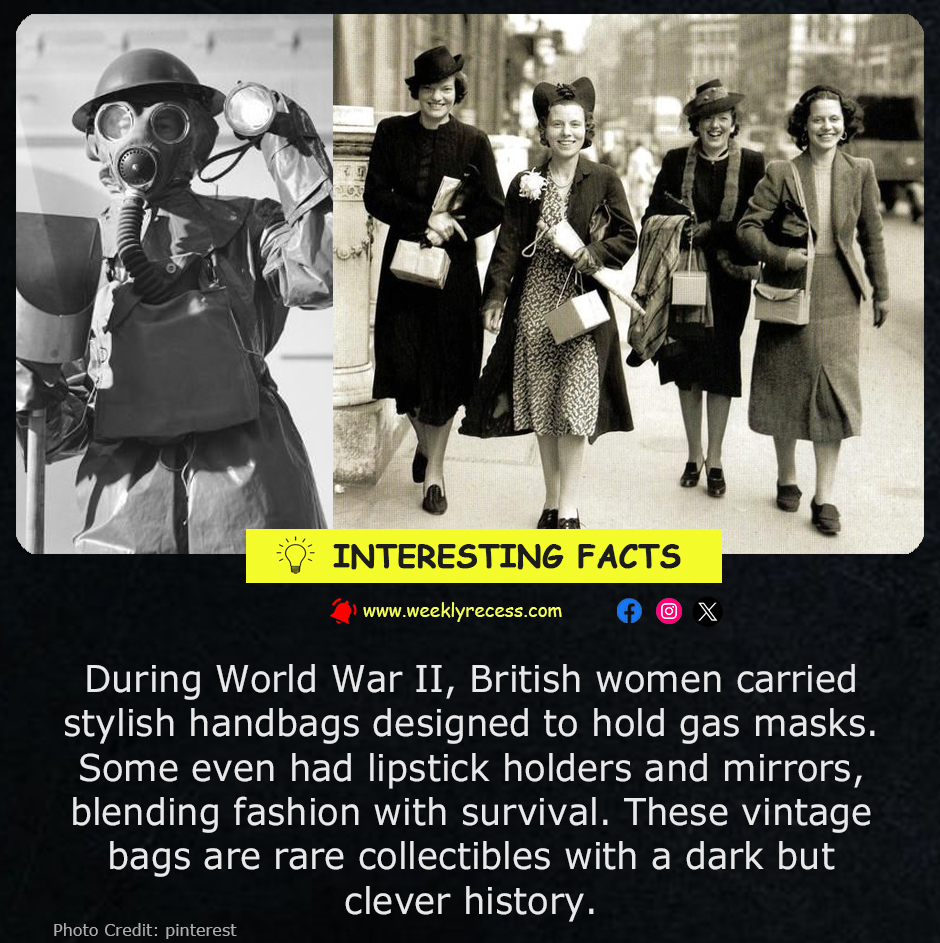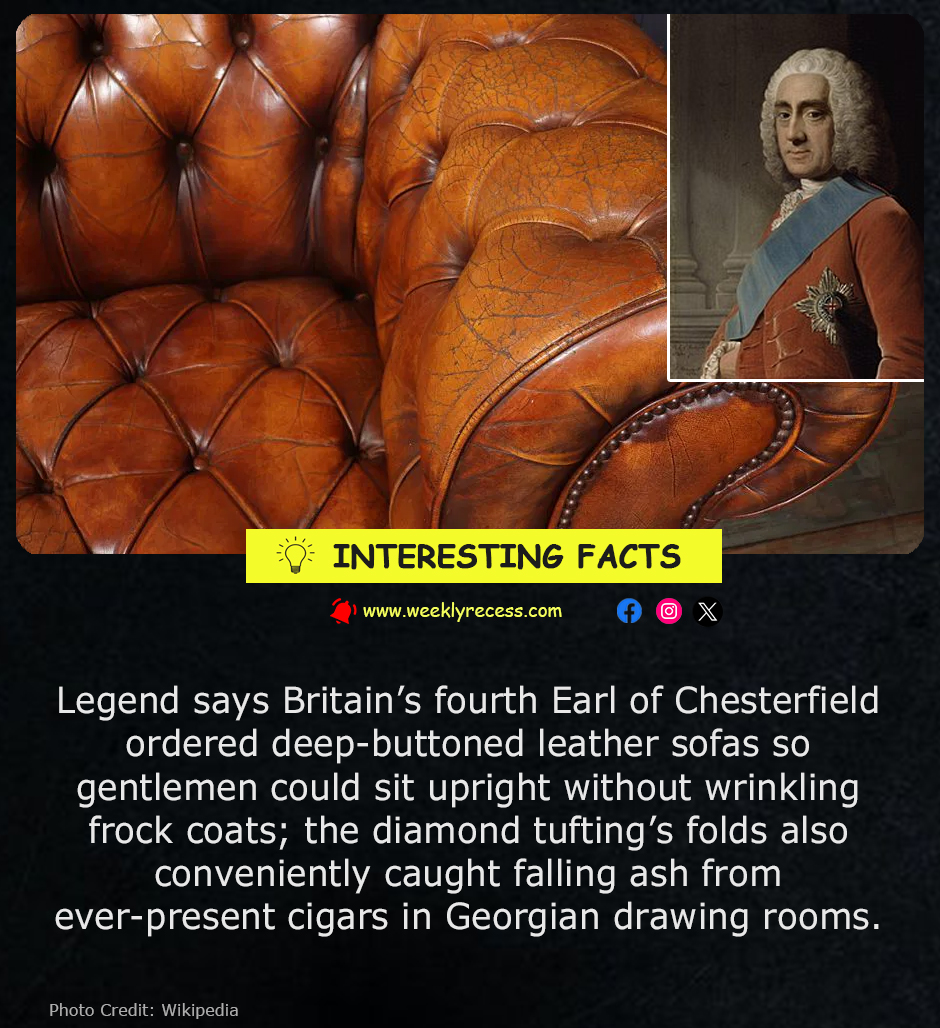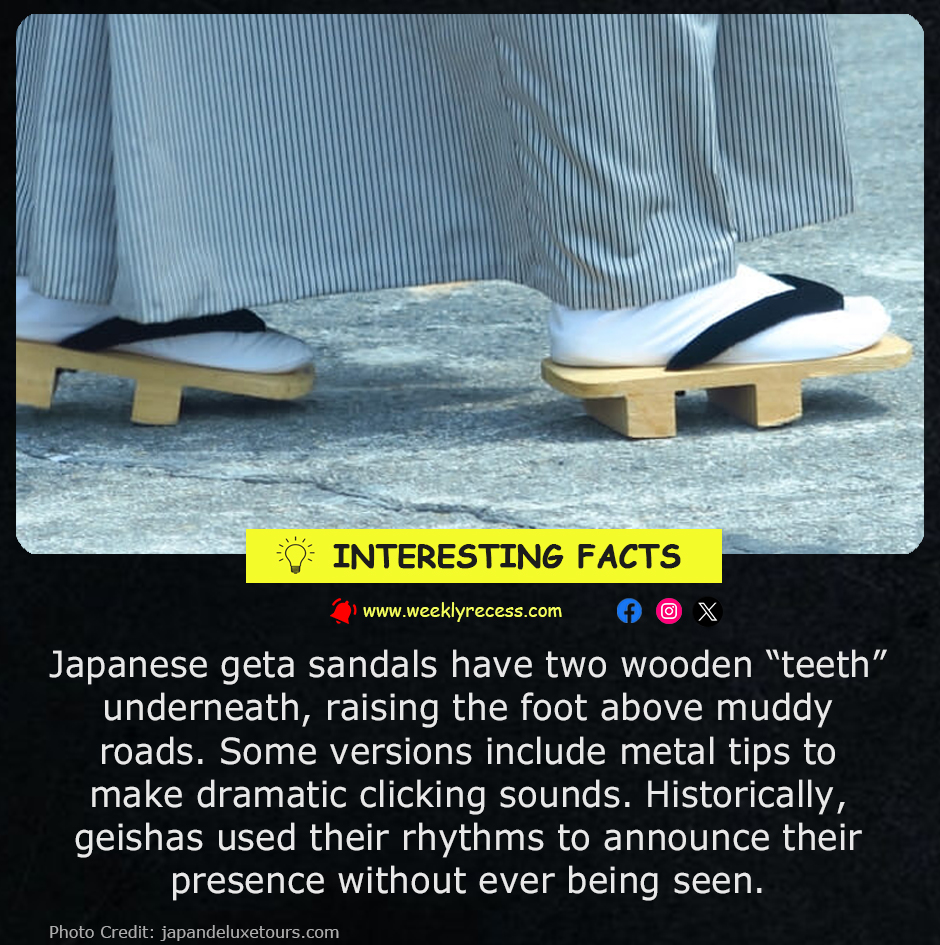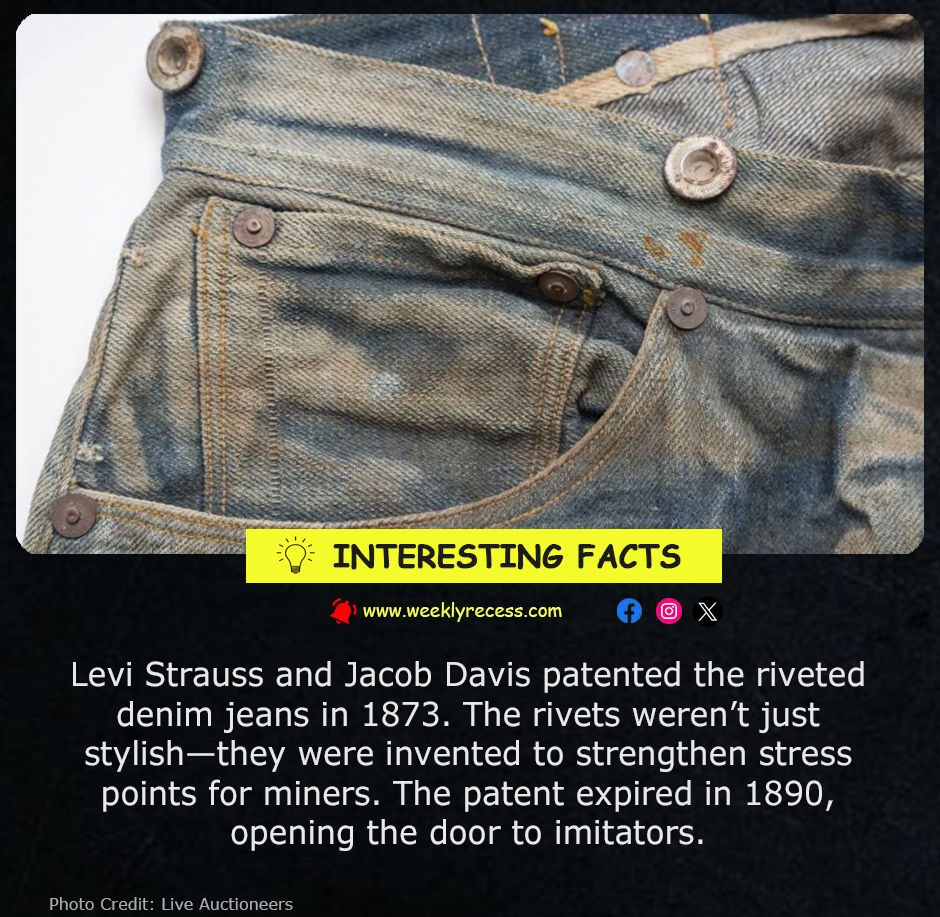During World War II, British women found a remarkable way to balance style with survival—by carrying handbags specifically designed to hold gas masks. These bags weren’t just practical; they often came with built-in mirrors and lipstick holders, allowing women to maintain a sense of normalcy and femininity in the face of air raids and uncertainty. Today, these rare vintage accessories stand as haunting yet clever reminders of wartime ingenuity and the resilience of fashion under fire.

Legend says the Chesterfield was designed to keep coats crisp and catch cigar ash in its folds.

Built in 312 BC, this Roman road has stood the test of time.

Doha, Qatar is the first city to use blue roads to lower asphalt temperatures by up to 20°C.

Geta sandals elevate feet from mud and once let geishas announce their presence through distinct, echoing clicks

In 1873, Levi Strauss and Jacob Davis patented riveted jeans to reinforce stress points for hard-working miners.







